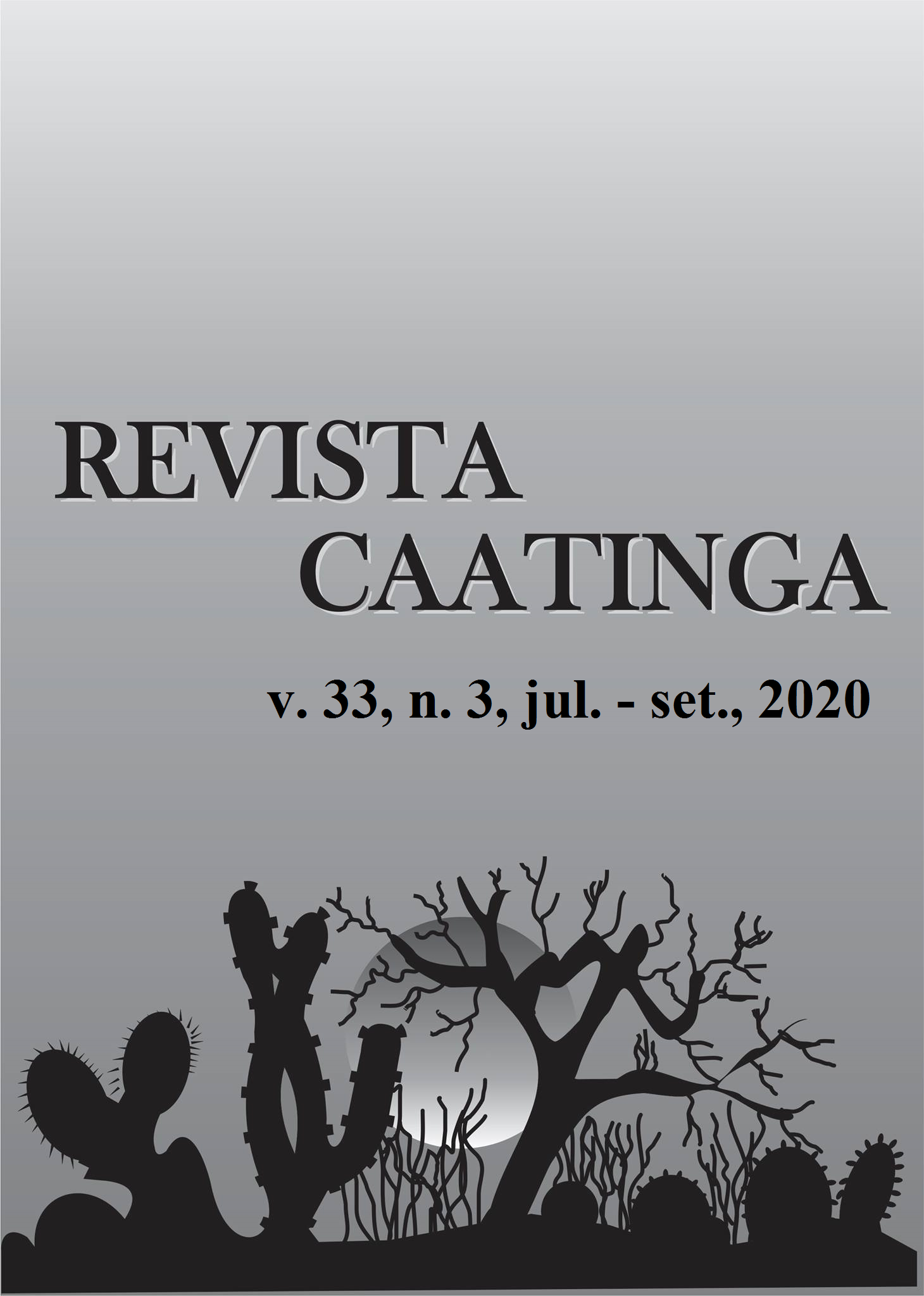MORPHOLOGICAL AND MORPHOMETRIC CHARACTERIZATION OF PRATYLENCHUS SPECIES IN SUGARCANE CROPPING AREAS OF PERNAMBUCO STATE
DOI:
https://doi.org/10.1590/1983-21252020v33n303rcKeywords:
Lesion nematode. Saccharum. Morphological and morphometric variation.Abstract
The root-lesion nematodes Pratylenchus spp. have a wide geographic distribution and a large number of host plants. These migratory endoparasites are found associated with sugarcane around the world causing diseases that induce permanent losses in productivity. Although this genus has ordinarily been reported in low-producing sugarcane areas in northeastern Brazil, studies of the species occurrence are few and restricted to a very low number of sites and samples. This study aimed to morphologically and morphometrically characterize Pratylenchus species from different sugarcane regions of Pernambuco state, where composite samples of soil and roots were collected on 30 farms from three sugarcane mills. The external morphological characters of the nematode body from different populations had a diagnostic value compatible with those obtained in the literature, showing the dominance of P. zeae (87%) in the region. Atypical populations of the genus Pratylenchus were also found.
Downloads
References
BELLÉ, C. et al. Fitonematoides associados à cultura da cana-de-açúcar no Rio Grande do Sul, Brasil. Nematropica, 44: 207-217, 2014.
BELLÉ, C. et al. Reaction of sugarcane genotypes to parasitism of Meloidogyne javanica and Pratylenchus zeae. Revista Caatinga, 30: 530-535, 2017.
BEZOOIJEN, J. V. Methods and techniques for nematology. Wageningen: Wageningen University, 2006. 112 p.
CASTILLO, P.; VOVLAS, N. Pratylenchus (Nematoda: Pratylenchidae): Diagnosis, biology, pathogenicity and management. Leiden: Brill, 2007. 529 p.
CHAVES, A. et al. Incidência de Meloidogyne spp. e Pratylenchus sp. em cana-de-açúcar no Estado de Pernambuco, Brasil. Nematologia Brasileira, 33: 278-280, 2009.
DOUCET, M. et al. Temperature induced morphometrical variability in an isolate of Pratylenchus vulnus Allen & Jensen, 1951 (Nematoda: Tylenchida). Nematology, 3: 1-8, 2001.
GONZAGA, V.; SANTOS, J. M. Estudo comparativo da multiplicação in vitro de seis espécies de Pratylenchus em cilindros de cenoura. Nematologia Brasileira, 34: 226 -230, 2010.
JENKINS, W. R. A rapid centrifugal-flotacion technique for separating nematodes from soil. Plant Disease Reporter, 48: 692, 1964.
MARANHÃO, S. R. V. L. et al. Nematode abundance and diversity in sugarcane fields in Brazil. Tropical Plant Pathology, 43: 485-498, 2018.
MAI, W. F. et al. Plant-parasitic nematodes: a pictorial key to genera. Ithaca: Cornell University Press, 1996. 277 p.
MOKRINI, F. et al. Quantitative detection of the root-lesion nematode Pratylenchus penetrans using qPCR. European Journal of Plant Pathology, 137: 403-413, 2013.
NORONHA, M. A. et al. Meloidogyne and Pratylenchus species in sugarcane fields in the state of Alagoas, Brazil. Ciência Rural, 47: 1-3, 2017.
OLIVEIRA, A. Sugarcane technology and Research. Florida, USA: Intechopen, 2018. 122 p.
OLOWE, T.; CORBETT, D. C. M. Morphology and morphometrics of Pratylenchus brachyurus and P. zeae II. Influence of environmental factors. Indian Journal of Nematology, 14: 6-17, 1984.
OVERSTREET, C. et al. Site specific nematode management-development and success in cotton production in the United States. Journal of Nematology, 46: 309-320, 2014.
PORTO, A. C. F. et al. Management of Plant-Parasitic Nematodes on Sugarcane under Tropical Conditions In: SINGH, P.; TWARI, A. K. (Eds.). Sustainable Sugarcane Production. New Jersey, USA: Apple Academic Press, 2018. 1 ed., cap. 11, p. 1-426.
RAMOUTHAR, P. V.; BHUIYAN, S. A. Nematode parasite of sugarcane. In: SIKORA et al. (Eds.). Plant parasitic nematodes in subtropical and tropical agriculture. Boston, USA: CABI International, 2018. 3 ed., cap. 18, p. 658-686.
SAS Institute. Certification Prep Guide: Base Programming for SAS®9, fourth ed. Cary, North Carolina: SAS Institute Inc., 2017. 582 p.
SILVA, L. M. A. et al. Seasonal variation of plant-parasitic nematodes and relationship with nutritional and growth properties of sugarcane plantations. Tropical Plant Pathology, 42: 132-136, 2017.
SILVA, M. S. et al. Comportamento de genótipos RB de cana-de-açúcar ao parasitismo dos nematoides das galhas. Revista Brasileira de Ciências Agrarias, 11: 73-79, 2016.
YU, Y. T. et al. A review of root lesion nematode: identification and plant resistance. Advances in Microbiology, 2: 411-416, 2012.
Downloads
Published
Issue
Section
License
Os Autores que publicam na Revista Caatinga concordam com os seguintes termos:
a) Os Autores mantêm os direitos autorais e concedem à revista o direito de primeira publicação, com o trabalho simultaneamente licenciado sob a Licença Creative Commons do tipo atribuição CC-BY, para todo o conteúdo do periódico, exceto onde estiver identificado, que permite o compartilhamento do trabalho com reconhecimento da autoria e publicação inicial nesta revista, sem fins comerciais.
b) Os Autores têm autorização para distribuição não-exclusiva da versão do trabalho publicada nesta revista (ex.: publicar em repositório institucional ou como capítulo de livro), com reconhecimento de autoria e publicação inicial nesta revista.
c) Os Autores têm permissão e são estimulados a publicar e distribuir seu trabalho online (ex.: em repositórios institucionais ou na sua página pessoal) a qualquer ponto antes ou durante o processo editorial, já que isso pode gerar alterações produtivas, bem como aumentar o impacto e a citação do trabalho publicado (Veja O Efeito do Acesso Livre).







